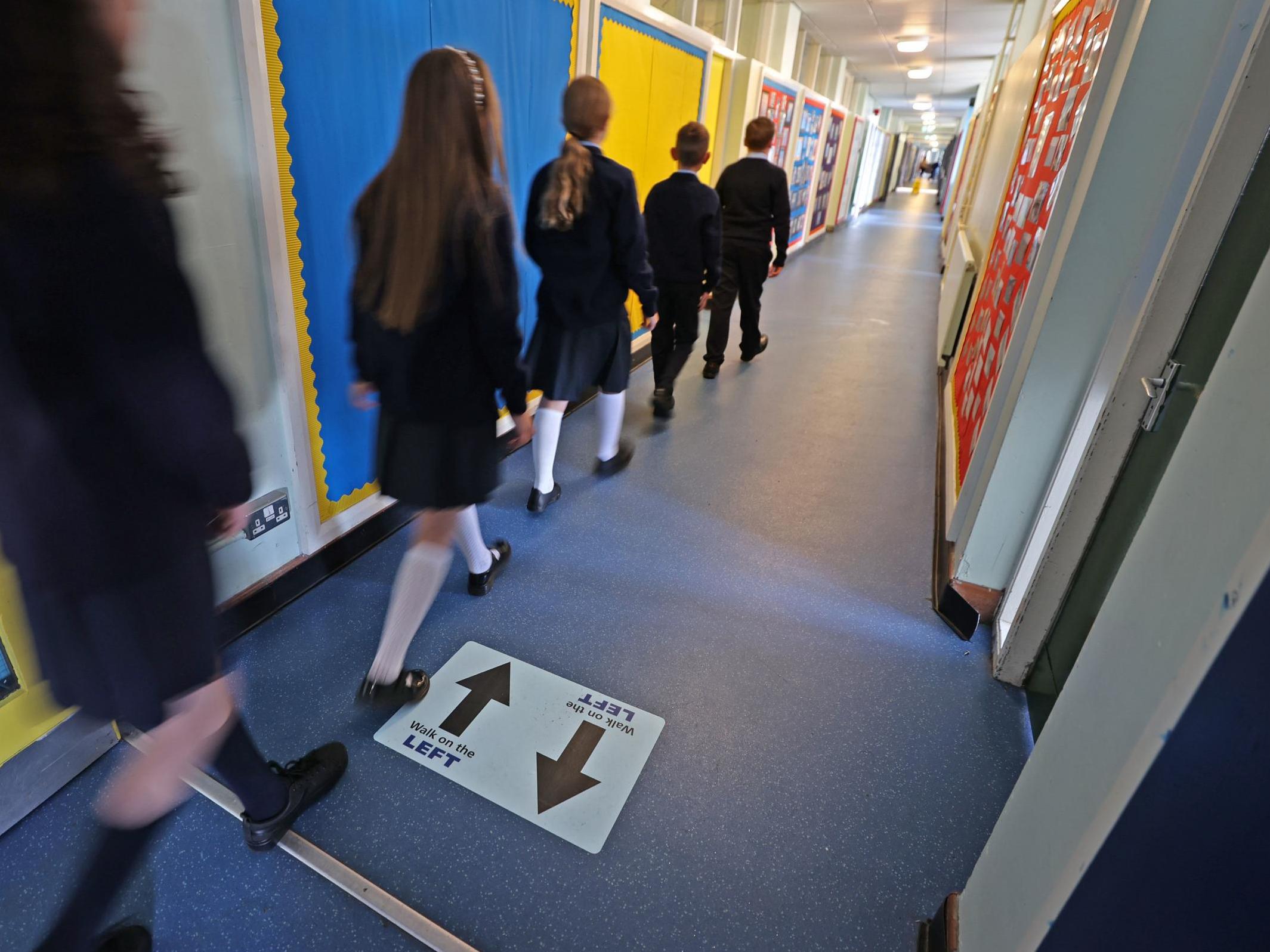Coronavirus: How are schools preparing for the return of pupils in England and Wales?
Reopening of classrooms is crucial moment in emergence from lockdown, writes Andrew Woodcock


The return of millions of children to schools in England and Wales next week is one of the most significant moments of the withdrawal from coronavirus lockdown, and huge stakes are riding on it politically.
Pupils have already been back for a fortnight in Scotland, where an outbreak of Covid-19 in a Dundee school linked to more than 20 infections sparked a hasty rethink of rules around face-coverings.
A rash of flare-ups in English schools – or a refusal by parents to send their children back – would be a deep embarrassment for education secretary Gavin Williamson and prime minister Boris Johnson.
So what has been done to prepare for a smooth return to the classrooms after 160 days away?
School leaders have been told to make premises Covid-secure, but the precise details of how this should be done are being left to local discretion.
Many schools are staggering arrival and leaving times, lunch breaks and playtimes, and all are being told to make arrangements for regular hand-washing and hygiene opportunities.
Because keeping classes entirely separate is impractical for the majority of secondaries, due to children taking different options, a lot have chosen to create year-wide “bubbles”, some of them running into hundreds, each keeping to its own part of the school.
Some schools are implementing one-way systems in corridors, moving desks and chairs so pupils look forward rather than facing one another and installing additional hand-washing and sanitiser stations.
Meals may be eaten in classrooms or outdoor seating areas to avoid children crowding into canteens, and some schools are using apps or lanyards to handle ordering and payment with the minimum of physical contact.
After a last-minute U-turn, Mr Johnson has ordered face-coverings to be worn in communal areas of secondaries in towns and cities subject to local Covid-related restrictions, like Leicester, Manchester and Bradford. In other parts of England, decisions on mask use will be for individual schools to make.
But the PM has made clear there should be no use of face coverings by staff or pupils in lessons, branding the idea “nonsensical”.
Social distancing guidelines will not be mandated on dedicated school transport but are advised where possible. Children should sit with members of their own bubble, wear face coverings if they are aged 11 or over and clean their hands before getting onto and off buses and coaches. Parents, staff and pupils are encouraged to walk or cycle to school rather than use public transport.
Controversially, ministers are restoring the power – suspended during the peak of the pandemic – to fine parents who keep their children away from school.
If a child shows symptoms, such as a persistent cough, fever or loss of taste or smell, while at school they must be sent home and take a Cover-19 test. If positive, they will be told to self-isolate for 10 days, while other members of their household will have to stay home for 14.
Only after a positive test would pupils or staff members who have been in close contact with the child be told to self-isolate for 14 days. In cases where two or more infections occur, local public health protection teams could order the isolation of larger groups, potentially a bubble including the whole year, or even shut schools down – though the Department for Education says the latter option “should not generally be necessary”.
In cases of an outbreak, mobile testing units could be sent to schools to check whole classes or year groups on the spot.
Schools and colleges are each being sent a pack of 10 coronavirus home testing kits for use in “exceptional circumstances”, with more available to be ordered if needed. Schools are also receiving packs of personal protective equipment (PPE) to use in very limited situations, such as when a staff member is unable to maintain 2m distance from a pupil with a suspected case of coronavirus.
New guidance released on the Friday evening before the planned reopening of most English and Welsh schools set out plans for education in the case of future localised flare-ups of Covid-19.
Mr Williamson made clear that closure of schools or changes to attendance requirements would be taken only as an “absolute last resort” in such outbreaks, with other measures such as shutting pubs or shops or restricting social contact coming earlier.
The new guidance sets out four tiers of restrictions, beginning with tier 1, which requires the use of face coverings by pupils in year 7 and above in communal areas of schools, such as corridors.
At tier 2, secondary schools and colleges would be advised to use rotas, with different bubbles of pupils attending at different times to break chains of transmission.
In more serious outbreaks, tier 3 or 4 would introduce full-time remote learning for wider groups of pupils, with vulnerable children and the sons and daughters of critical workers continuing to attend school.
Join our commenting forum
Join thought-provoking conversations, follow other Independent readers and see their replies
Comments